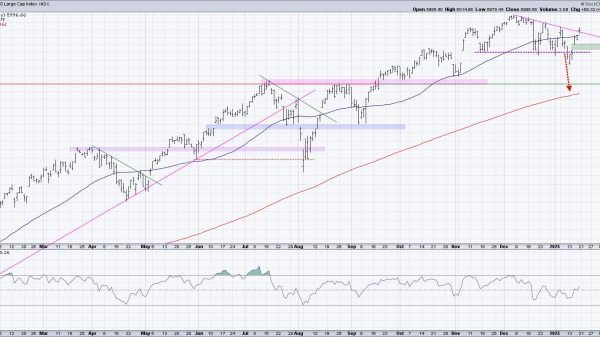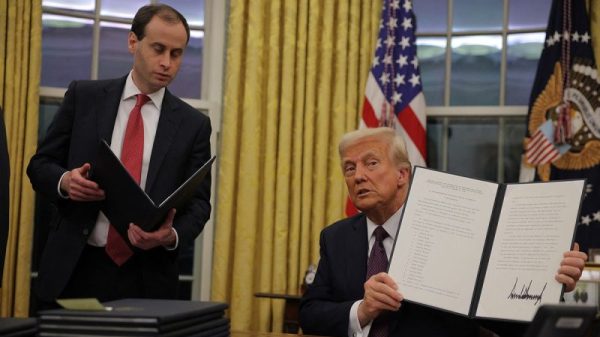
President-elect Donald Trump has signaled an appetite for change with his new Department of Government Efficiency and various cabinet picks. While many federal programs and regulations need an overhaul, childcare policy is an overlooked area that is ripe for a new approach.
For parents of young children who utilize formal childcare, it is one of the most significant child-rearing costs. At the high end, annual infant care costs are quoted at an eye-popping $24,243 in Washington, DC, and $20,913 in Massachusetts. Historically, federal policymakers have tried to solve childcare affordability issues by doubling down and expanding childcare subsidies. Recently they have dug their heels in on this approach.
This fall, Representative Ro Khanna (D‑CA) proposed a bill capping childcare costs at $10 per day for all families earning less than $250,000 annually. Over the summer, Senators Tim Kaine (D‑VA) and Katie Britt (R‑AL) proposed expanding various existing childcare subsidies, including the Child and Dependent Care Tax Credit (CDCTC).
Meanwhile, the Biden administration unsuccessfully proposed fully subsidizing some families’ childcare and capping other families’ childcare costs at 7 percent of income. Biden’s plan would have the government subsidizing childcare demand and supply (although the American Families Plan failed, some of the childcare ideas were rolled into a subsequent Biden executive order).
Proposals like these are enormously costly, raise the market price of care, and favor working families that use childcare over working families that don’t, like families with stay-at-home parents. Government policy should be neutral regarding family work-life decisions rather than favoring the dual-earner model.
The new administration would be smart to take a different approach and refocus on the root cause of high costs and waiting lists. A significant portion of access and affordability issues in the childcare sector are driven by restrictive local regulations, sometimes encouraged by federal policy.
Studies find that childcare regulations reduce care affordability and access. A variety of regulations are undoubtedly to blame, but research indicates that educational requirements for staff and staff-to-child ratios are especially important.
A simple comparison of state regulation and cost data supports this idea. For instance, as educational requirements increase for daycare center directors, the average cost of care nearly doubles. The average cost of infant care is $10,018 in states with no or minimal educational requirements, while the average cost is $19,354 for states that require a bachelor’s degree for daycare center directors.
The cost of childcare is also higher in states with restrictive educational requirements for daycare center teachers: the average cost of infant care in states without educational requirements is $9,586, whereas the average cost of care is $18,285 in states that require an associate’s degree for center teachers.
Just as greater educational requirements for would-be carers limit the supply of childcare staff, restrictive child-to-staff ratios and maximum group sizes limit the supply of “seats” at childcare centers. Data also support a link between these regulations and costs: the average cost of care nearly doubles as the child-to-staff requirement moves from 5 children per staffer to 3 children per staffer.
Regulators claim that these and other childcare regulations increase the quality of care: when Washington, DC, implemented a rule requiring that childcare providers have a college degree, supporters and officials argued that it would benefit DC’s disadvantaged children and that educational requirements would increase staff pay.
But increasing requirements so that some staffers lose their jobs is an ill-considered strategy for “raising” staff pay. More importantly, research indicates that regulating daycare reduces options for low-income families, who respond by sending their children to lower-quality home-based care.
Rather than doubling down on failed policy, the incoming administration should focus on rolling back costly regulations that limit supply and access to care. It can revoke Biden’s childcare EO and use its influence to refocus the conversation on local government policy.
For its part, Congress should eliminate federal laws that worsen credentialism in the childcare sector. It can start by removing the requirement that Early Head Start staff have a CDA and be trained in child development and that half of Head Start teachers have at least an associate’s degree in early childhood education or a related area. Local policymakers have admitted that federal policies like this have encouraged them to implement more restrictive childcare regulations locally.
These reforms would constitute a radical change in the direction of childcare policy, and paired with serious efforts to reform local regulation, they would make a difference.



























